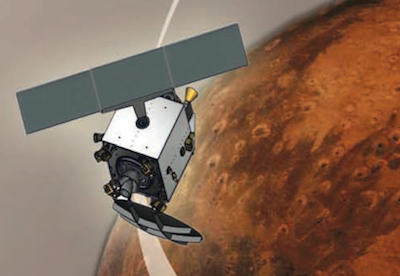1) Mars Orbiter Mission (MOM), India’s spacecraft to Mars, beamed
back about 10 pictures of the Red Planet’s surface. These photographs were
taken by a colour camera on board the spacecraft and show Mars’ craters. The
first pictures were received by the Indian Space Science Data Centre (ISSDC).
Where is the ISSDC situated? – Bayalu (Karnataka)
Explanation: Bayalu is situated
around 40 km from Bangalore. The camera which took these photographs was
switched on a few hours after India’s Mars mission made history on 24 September
2014 by entering the planet’s orbit. The camera is among the 5 instruments on
board the spacecraft. The other instruments will become operational one by one
in the next few days.
2) India created history on 24 September 2014 by becoming the first
country to successfully enter Mars’ orbit on its very first attempt as ISRO’s
Mars Orbiter Mission (MOM) was successfully placed in planet’s orbit. When this
mission took-off from Earth? – 5 November 2013
Explanation: ISRO’s first and
historic mission to Mars, the red planet, was launched on 5 November 2013 from
India’s spaceport of Sriharikota (in Andhra Pradesh) along the eastern coast
some 100 kilometres north of Chennai. The ambitious mission to Mars was first
publicly announced by former Prime Minister Dr. Manmohan Singh from the Red
Fort on 15 August 2012 on the occasion of his Independence Day address. The
success of India’s Mars mission is undisputedly a shining moment in the space
exploration history of a country otherwise beset with developmental challenges.
Over half a century, the Indian space programme has managed many feats, but
none as dramatic as this successful mission to the red planet.
3) On 24 September 2014, ISRO became fourth agency in the World to
have successfully executed a mission to Mars. Which three worldwide space
agencies have been able to succeed in their respective Mars missions prior to
ISRO? – NASA (United States), Roscosmos
(Russia) and the European Space Agency (ESA) of European Consortium
Explanation: NASA’s Mariner 4 was
the first successful mission to Mars when it had the closest approach of Mars
on 15 July 1965. It was launched during November 1964. Mars 2 (1971) was the
first partially successful Russian mission to Mars. Mars Express (2003) was the
first successful Mars mission of the European Space Agency (ESA)
4) Which are the winners of the Right Livelihood Award for 2014, an
award also known as the “alternative Nobel”? – Edward Snowden with Alan Rusbridger, Asma Jahangir,
Basil Fernando and Bill McKibben
Explanation: Edward Snowden is
known for his disclosures of top secret surveillance programs conducted by the
United States. He will share the honorary portion of the prize
with Guardian editor Alan Rusbridger. Asma Jahangir is a noted human
rights activist of Pakistan. Basil Fernando is associated with the Asian Human
Rights Commission. Bill McKibben is a noted American environmentalist. The 1.5
million kronor ($210,000) cash award will be shared by the winners and the
award will be given on 1 December 2014 at Stockholm (Sweden).
5) What is the share split that was agreed by the central board of
the State Bank of India (SBI) on 24 September 2014? – 1:10
Explanation: A share split of
1:10 means one equity share of SBI will now be split into 10 shares. This
stands for reducing the face value of equity shares of the bank from Rs. 10 per
share to Rs. 1 per share and to increase the number of issued shares in
proportion thereof. The stock split is expected to increase investor
participation in the stock. Earlier during September 2014, Punjab National Bank
and ICICI Bank had also announced share split. Both the banks have approved
sub-division of one equity share into five.
6) The Supreme Court on 24 September 2014 cancelled all but four of
the 218 coal block allocations it had declared illegal and arbitrary in its
order of 25 August 2014. The four coal blocks exempted belong to which
entities? – Sasan Power Limited, NTPC and SAIL
Explanation: The four functional
coal blocks exempted from cancellation include two ultra mega power projects
(UMPPs) under Sasan Power Limited in Madhya Pradesh and two other operated by NTPC
and another by SAIL. Acting on the Central government’s assurance that it is
fully prepared to face the cancellation of the coal block allocations and will
not have any difficulty to take the coal industry forward, a three-judge bench
led by Chief Justice of India R.M. Lodha passed the order. On the Centre’s
request to save 40 functional coal blocks and six ready-to-function ones, the
court said 42 of them would continue to function for the next 6 months, till 31
March 2015, to give the government breathing space to manage the emerging
situation.

No comments:
Post a Comment